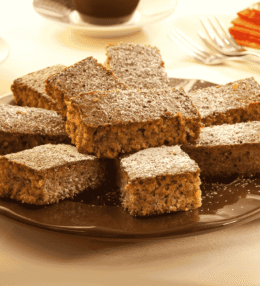
- View
Table of Contents
ToggleIn Turkish cuisine, Pilav, holds a special place as a versatile and comforting dish that can stand alone or complement any meal. With its delicate balance of buttery rice and subtle spices, Pilav is a staple found on Turkish tables, from family dinners to festive gatherings.
More than just a side dish, Turkish Pilav is a culinary tradition, an art form rooted in careful technique and the choice of simple yet high quality ingredients.
Want to dive deeper into Turkish Cuisine? Don’t miss our post on 44 Traditional Turkish Foods to Try
What Is Pilav?
Pilav is a traditional Turkish rice dish, typically made by sautéing rice in butter or oil before simmering it in a flavourful broth. It may sound simple, but Pilav is anything but ordinary, its preparation requires attention and care to achieve the desired texture: individual grains that are tender but not mushy, each one infused with flavour.
While plain Pilav is common, there are many regional variations, incorporating ingredients like vermicelli, chickpeas, or pieces of meat for added depth.
In Turkey, Pilav is more than a side dish; it is often the heart of the meal, paired with dishes like kebabs, stews, or fresh salads. It can be dressed up for special occasions or kept simple for everyday dining, showing the range and adaptability of this beloved dish in Turkish homes.
Ingredients and Taste
The main ingredients of Turkish Pilav are rice, butter or oil, and broth, with a pinch of salt to bring out the flavours. The choice of rice is important, typically a short or medium-grain rice is used, as it creates the desired texture.
Turkish Pilav also often includes a handful of vermicelli, lightly browned in butter before the rice is added. This adds a subtle nutty flavour and a slight crunch, enhancing the overall texture.
The taste of Pilav is delicate and aromatic, with a light, buttery flavour that complements the natural taste of the rice. When made with chicken or lamb broth, it takes on a savoury depth that pairs beautifully with grilled or roasted meats.
Seasoning is usually kept minimal, allowing the pure flavours of the rice and butter to shine through. The result is a dish that feels both satisfying and refined, a perfect balance of simplicity and richness.
A Taste of History
The tradition of making Pilav dates back centuries and can be found throughout the Middle East and Central Asia, where rice was highly valued and considered a luxurious ingredient.
In Turkey, rice pilaf became a staple during the Ottoman Empire, where chefs refined the technique to perfection, experimenting with ingredients and methods to create a dish worthy of the sultans.
Over time, Pilav became an essential part of Turkish daily life, valued for its versatility, ease of preparation, and satisfying taste. In Turkish culture, the art of preparing Pilav is often passed down through generations, with each family adding their own touches and variations.
The dish’s importance is reflected in Turkish sayings and traditions, where the success of a cook is often judged by their ability to make the perfect Pilav.
The balance of texture and flavour in Pilav is not only a matter of taste but also a reflection of the care and technique that goes into its preparation.

Turkish Pilav (Rice Pilaf)
Equipment
- Large pan with lid
- Fine sieve (for rinsing rice)
- Wooden spoon or spatula
- Measuring cups and spoons
- Knife and cutting board
Ingredients
- 1 cup long-grain rice preferably Baldo or Jasmine
- 2 tbsp unsalted butter
- 1 tbsp olive oil
- 1 small onion finely diced
- 2 cups chicken or vegetable broth
- Salt to taste
- 1/4 cup vermicelli noodles broken into small pieces (optional but traditional for added texture)
- Freshly ground black pepper optional
- Fresh parsley chopped, for garnish
Instructions
- Begin by rinsing the rice under cold water until the water runs clear. This removes excess starch and helps keep the grains separate. Drain well and set the rice aside.
- In a large pan, heat the olive oil and butter over medium heat until the butter melts. Add the finely diced onion and sauté for 3-4 minutes until translucent and fragrant, ensuring not to brown the onion.
- Add the vermicelli pieces (if using) to the pan and stir continuously until they turn a golden brown, about 2-3 minutes. This adds a toasted flavour and a subtle nuttiness to the pilaf.
- Add the rinsed and drained rice to the pan, stirring gently to coat each grain in the butter and oil mixture. Toast the rice for 2-3 minutes, stirring occasionally. This toasting step enhances the pilaf’s aroma and ensures fluffier grains.
- Pour in the chicken or vegetable broth, then add salt to taste. Stir gently to combine, ensuring all the rice is submerged in the liquid. Increase the heat to bring the broth to a gentle boil.
- Once boiling, reduce the heat to low and cover the pan with a tight-fitting lid. Allow the rice to simmer undisturbed for 15-18 minutes, or until all the liquid is absorbed and the rice is tender. Avoid lifting the lid during this time, as steam is essential for even cooking.
- After the cooking time, turn off the heat and let the rice sit covered for an additional 5 minutes. This resting period allows the steam to finish cooking the rice and helps to keep each grain separate.
- Fluff the rice gently with a fork to separate the grains, then transfer the pilaf to a serving dish. Garnish with freshly chopped parsley and a sprinkle of black pepper if desired. Serve warm alongside main dishes like kebabs, stews, or roasted vegetables, allowing the pilaf to soak up any accompanying sauces.






